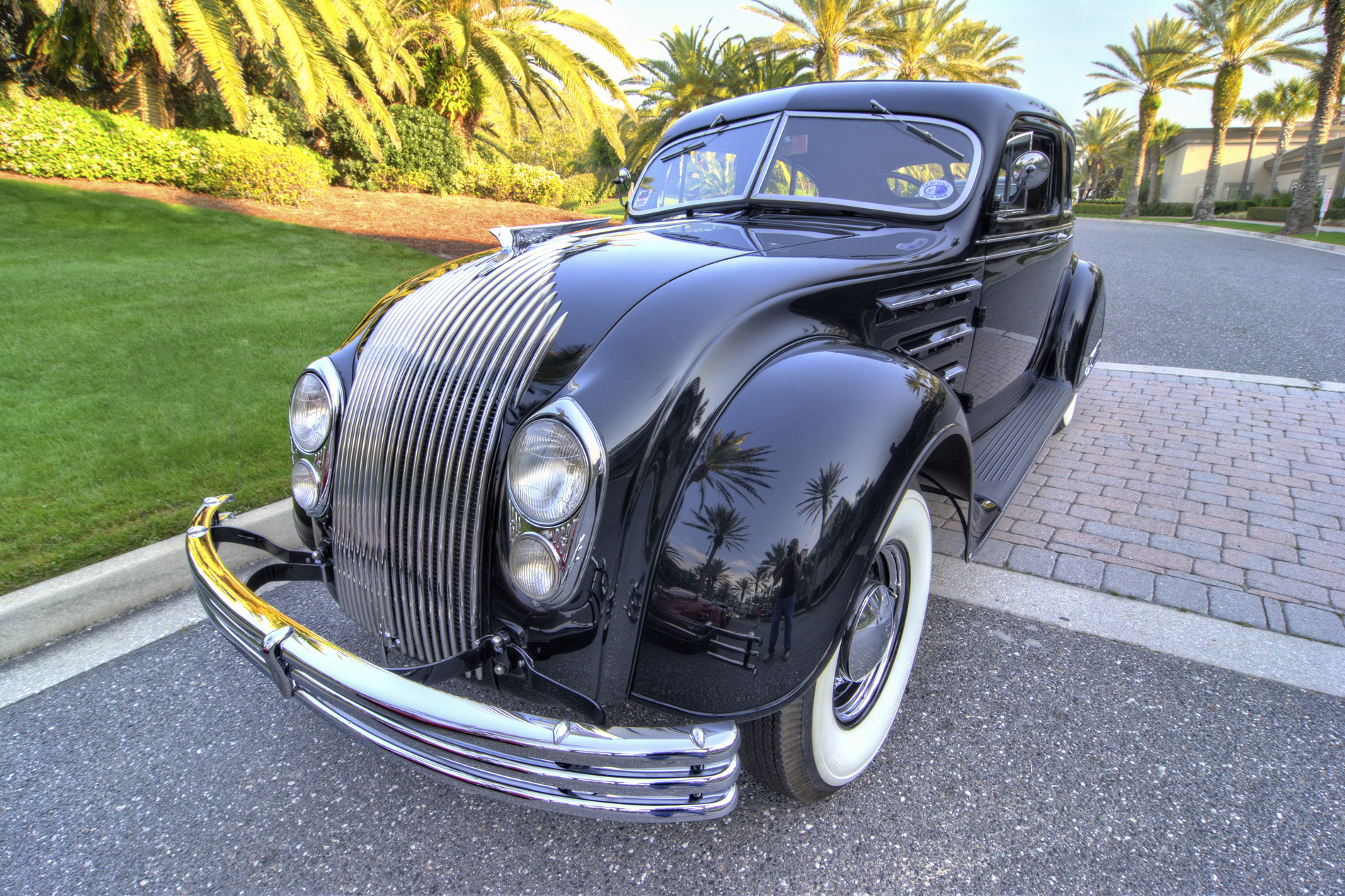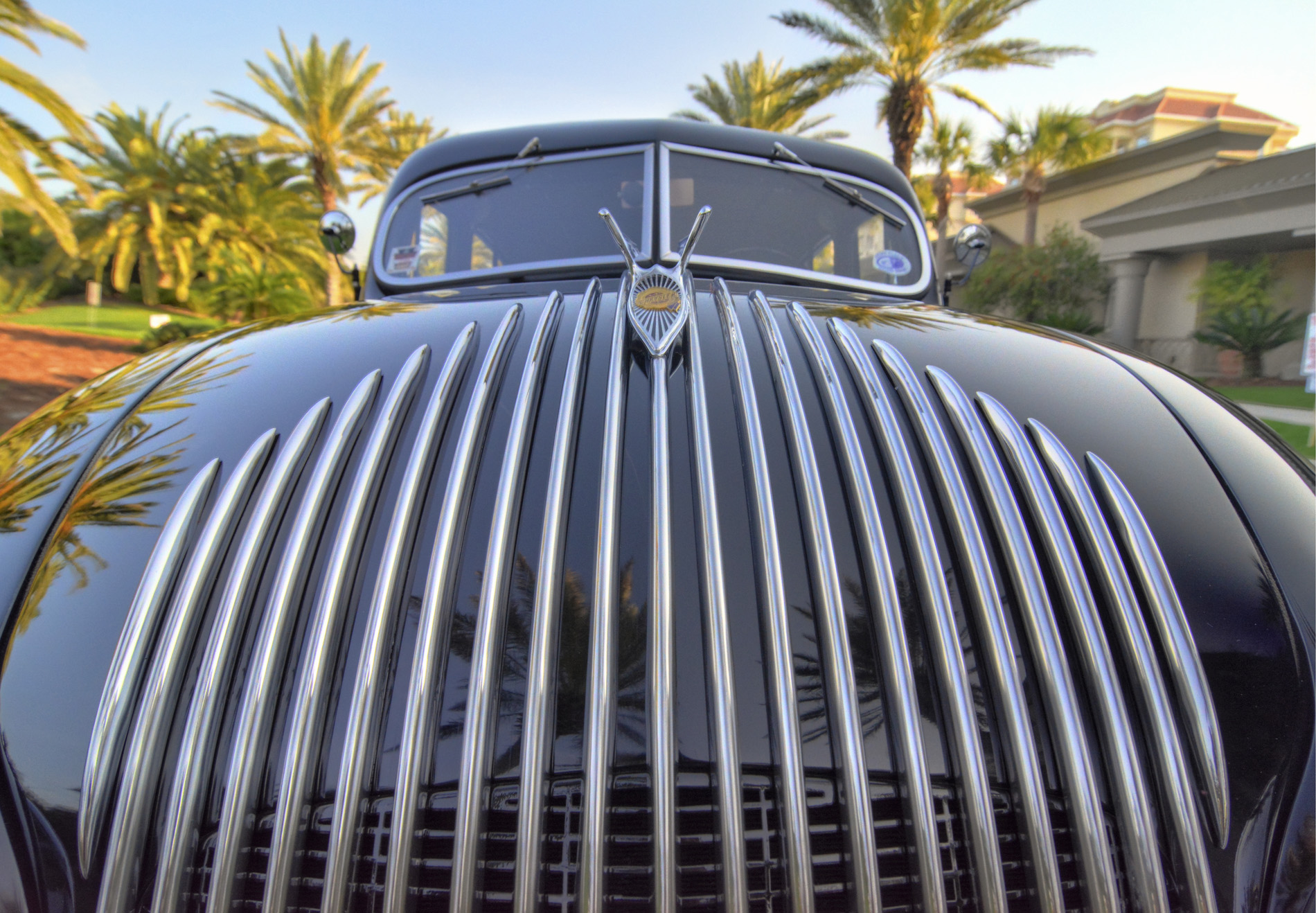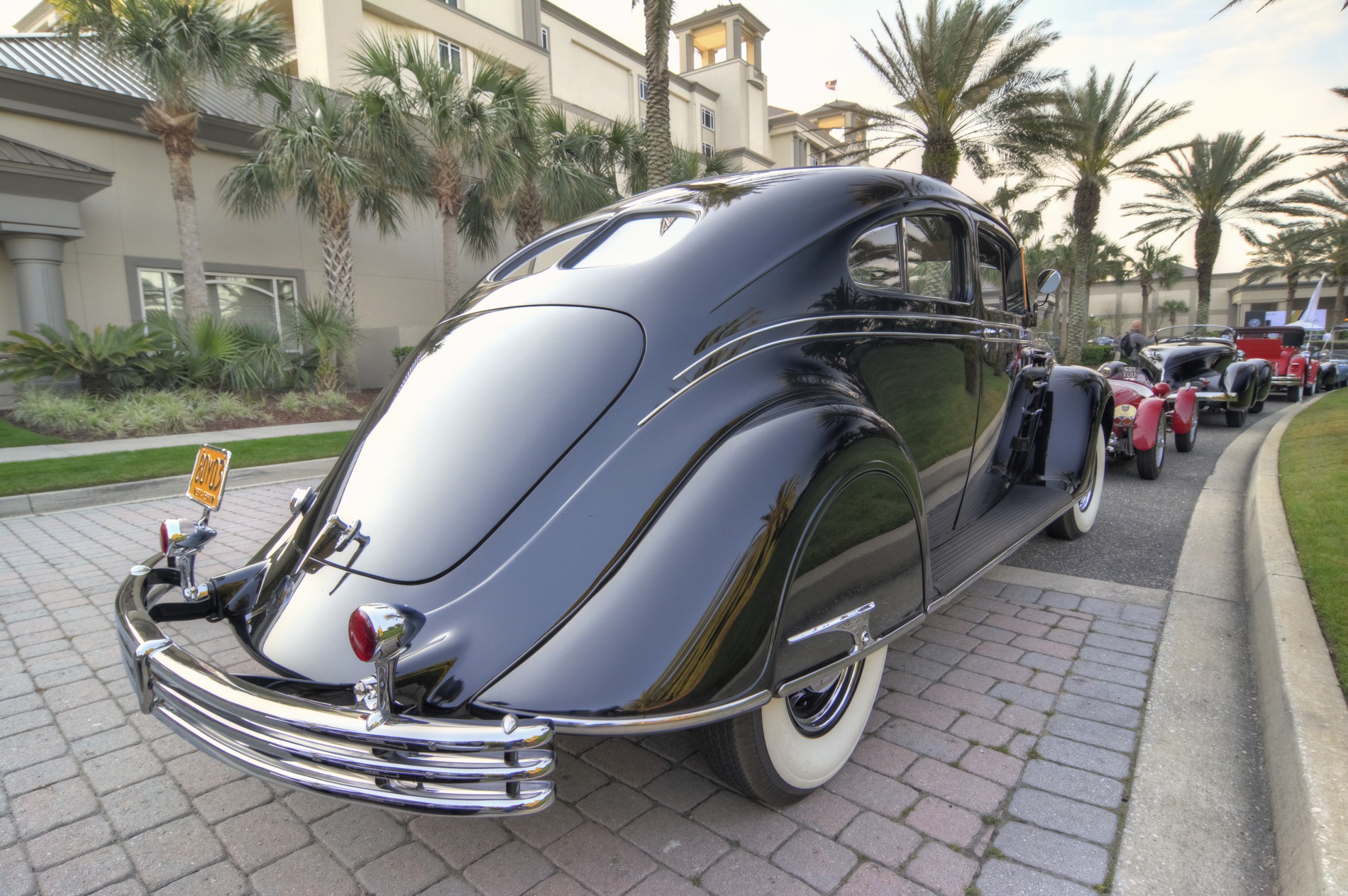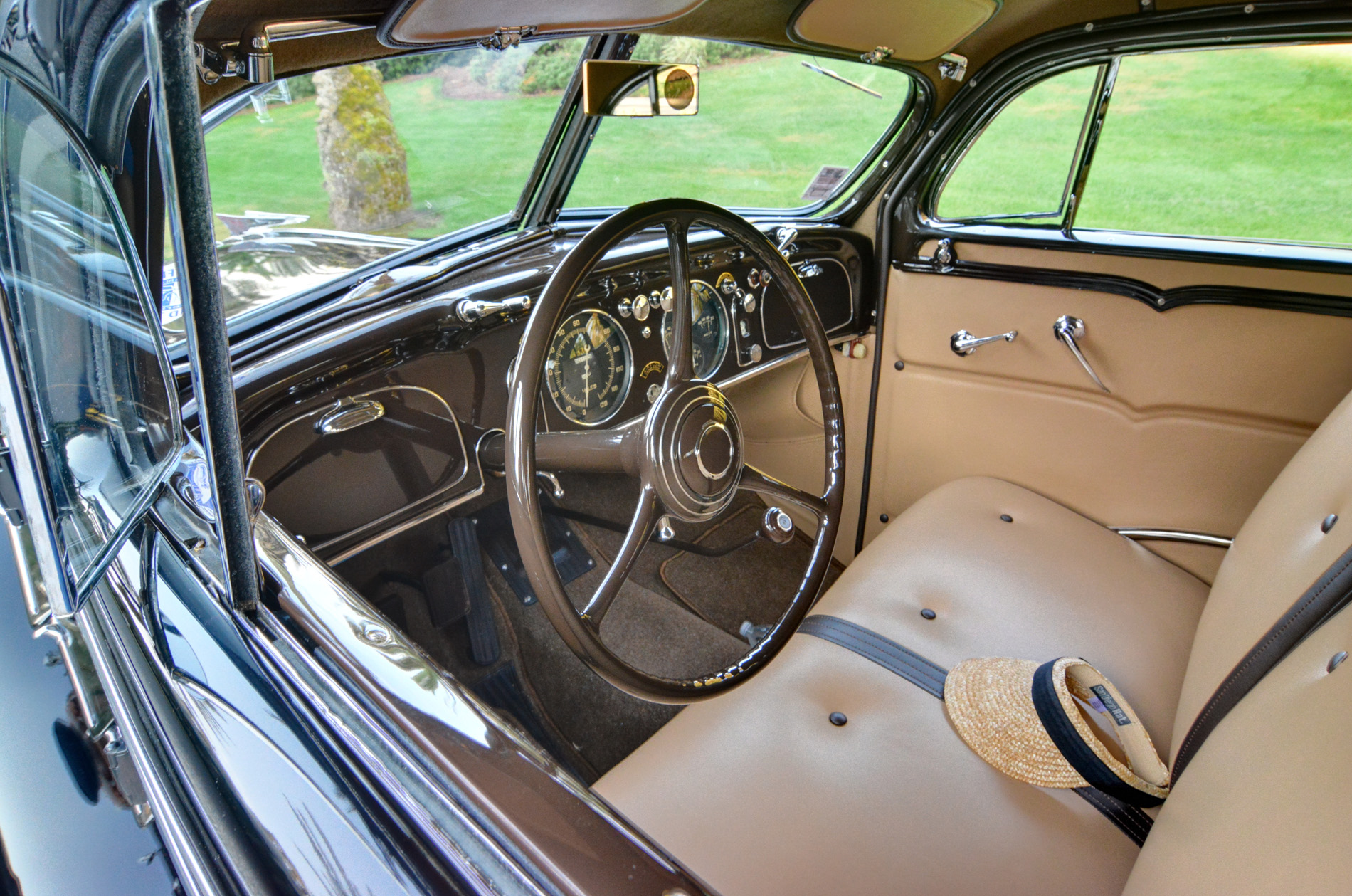
This 1934 Chrysler Airflow Imperial Coupe is one of 212 originally built and one of only three known to exist today. A 3-year restoration from boxes of many original parts and the original chassis and engine just concluded. The project was commissioned by the current owner after a two-year search for a 34 CV coupe with enough original parts and overall integrity to restore.
This model was one of Chrysler’s first attempts at a streamlined aerodynamic shape formed through wind tunneled research which did not receive the expected acceptance of the buying public. It caused Chrysler to drop the line after 1937. This unique design was ahead of its time.
Design and Features
- Manufacturer: Chrysler Corporation, an American automaker known for its engineering innovations.
- Body Style: Sedan and coupe variants were available, featuring a streamlined and aerodynamic design ahead of its time.
- Design Innovations: The Chrysler Airflow was designed with aerodynamics in mind, featuring a smooth, rounded body shape with integrated fenders and a sleek grille.
- Chassis: The Airflow introduced a revolutionary unibody construction, where the body and frame were integrated into a single unit for improved strength and rigidity.
- Interior: Spacious and luxurious, with comfortable seating, modern dashboard layout, and advanced instrumentation for its era.
Performance
- Engine Options: Powered by Chrysler's inline-8 engines, offering varying displacements and power outputs depending on the model and trim level.
- Transmission: Equipped with a manual transmission, typically a 3-speed gearbox, providing smooth gear changes.
- Driving Dynamics: The Airflow's advanced aerodynamics and unibody construction contributed to improved handling, stability, and reduced wind resistance compared to contemporary cars.
- Suspension: Featured independent front suspension and semi-elliptic leaf springs at the rear, enhancing ride comfort and stability.
- Brakes: Hydraulic drum brakes, standard for the time period, providing adequate stopping power.
Technological Innovation
- Streamlined Design: The Airflow was one of the first cars to incorporate aerodynamic principles into its design, reducing drag and improving fuel efficiency.
- Unibody Construction: Pioneered the use of unitized construction, which became a standard in modern car manufacturing for its structural integrity and weight-saving benefits.
- Engineering Advances: Introduced innovations like centralized engine placement, rear passenger seating, and improved crash safety measures, setting benchmarks for future automotive development.
Production and Legacy
- Production Years: The Chrysler Airflow was produced from 1934 to 1937.
- Impact: Despite initial mixed reception from consumers due to its unconventional styling, the Airflow's technological advancements and design influence had a lasting impact on the automotive industry.
- Legacy: The Airflow's design principles would later influence the development of cars worldwide, demonstrating Chrysler's commitment to innovation and engineering excellence.
Challenges and Reception
- Consumer Reception: Initially, the Airflow faced challenges in consumer acceptance due to its radical departure from traditional car designs.
- Historical Significance: Over time, the Airflow has gained recognition as a significant milestone in automotive design and technology, appreciated for its forward-thinking approach and engineering achievements.
You may purchase a print of the 1934 Chrysler Imperial Airflow in our dElegance 2017 online gallery.
The Vintage Automobile Article Index




